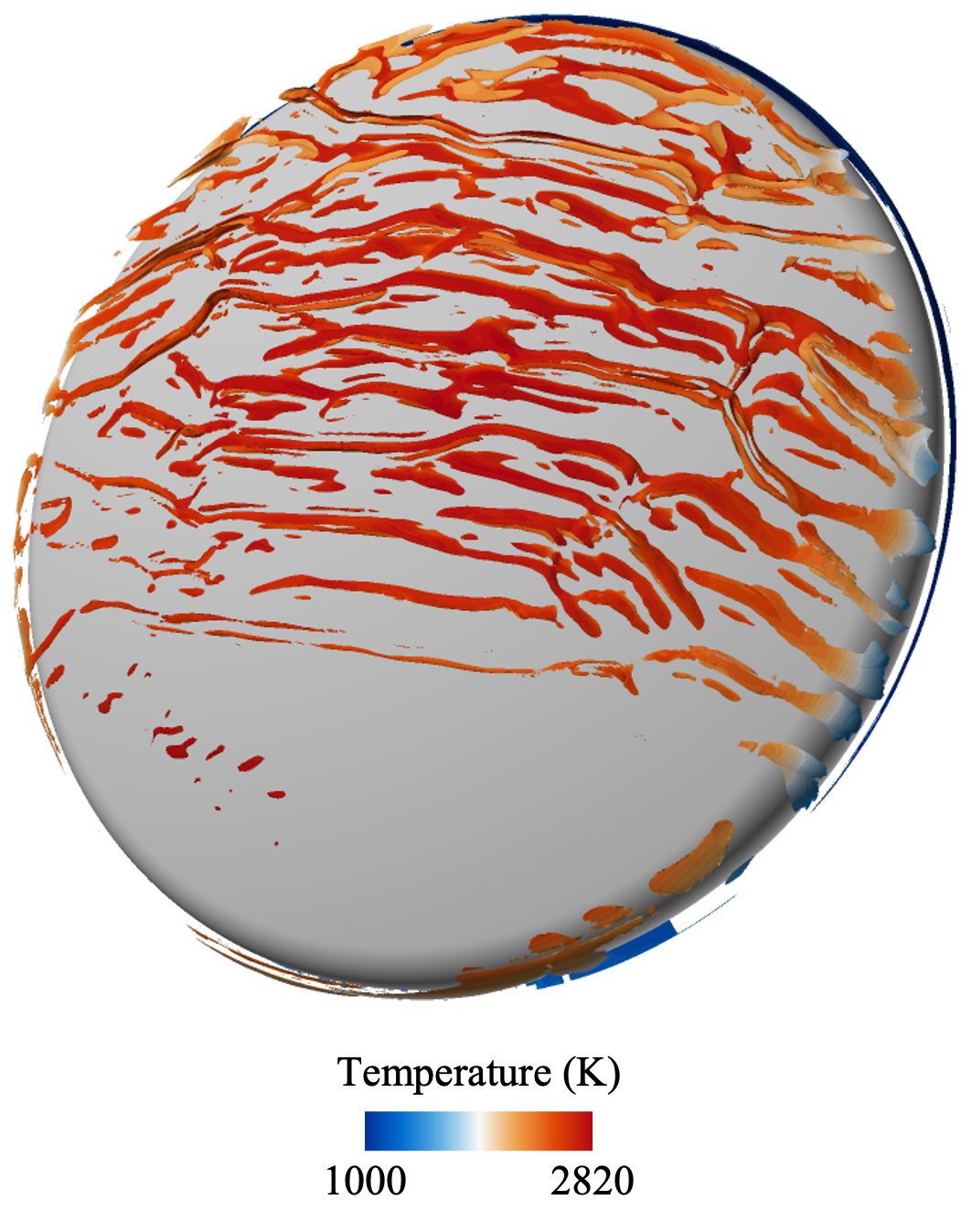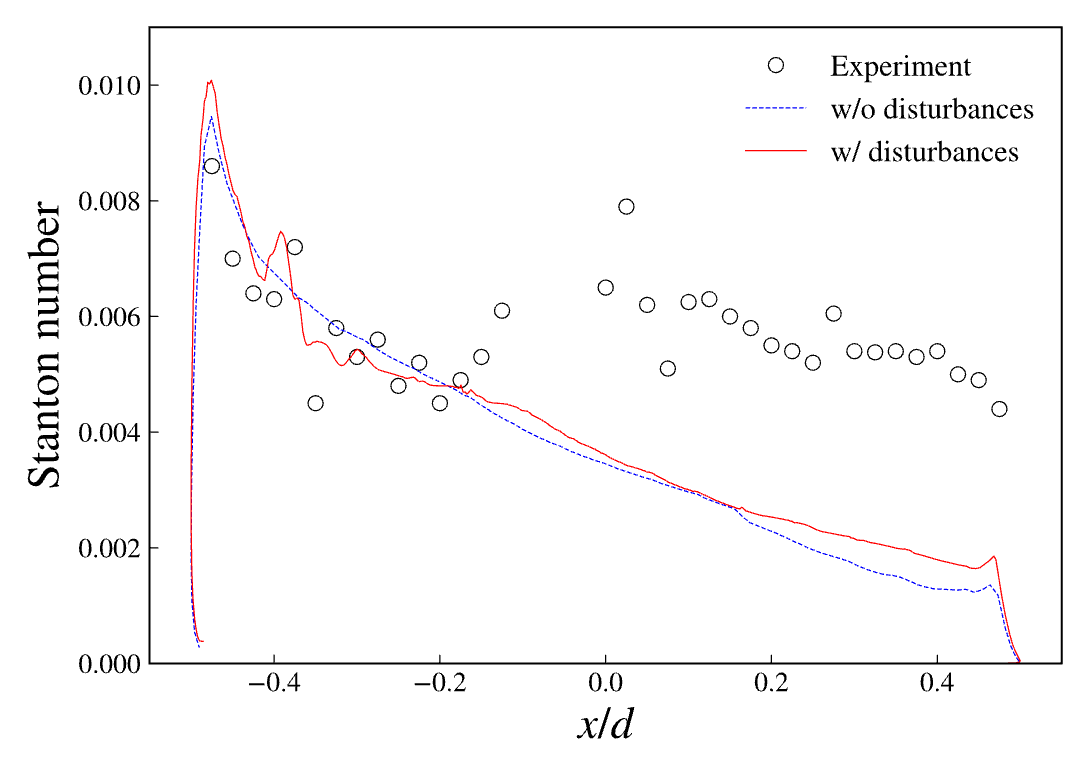Numerical Simulation on Hypersonic Boundary Layer
JAXA Supercomputer System Annual Report February 2023-January 2024
Report Number: R23EEG60100
Subject Category: Research and Development
- Responsible Representative: Shuto Yatsuyanagi, Research and Development Directorate, Research Unit IV
- Contact Information: Shuto Yatsuyanagi(yatrsuyanagi.shuto@jaxa.jp)
- Members: Shuto Yatsuyanagi
Abstract
A laminar-turbulent transition at the surface of a re-entry vehicle is an important issue for the design of a Thermal Protection System (TPS). Since the heat transfer coefficient in the turbulent boundary layer is several times higher than that in the laminar boundary layer, the location of the laminar-turbulent transition point is a crucial design parameter for the TPS. Currently, the transition process is not yet understood, and the actual design assumes a turbulent boundary layer along the entire flight path and allows excessive TPS weight. The objective of this project is to elucidate the transition process on the surface of the re-entry vehicle by numerical simulation on JSS3 and to obtain knowledge that will contribute to the weight reduction of the TPS.
Reference URL
N/A
Reasons and benefits of using JAXA Supercomputer System
Since the laminar-turbulent transition is closely related to the growth process of small disturbances in the airflow, its numerical simulation requires high spatio-temporal resolution. To achieve numerical simulations with high spatio-temporal resolution, it is essential to use a large amount of computational resources such as JSS3.
Achievements of the Year
A high-order accuracy numerical method has been developed for simulating disturbance growth and transition processes in high-temperature hypersonic flows (Fig. 1).
The effect of freestream disturbances on the disturbance growth process over a blunt body was evaluated. Fig. 2 shows developing two-dimensional waves, which was considered to be a Kelvin-Helmholtz (KH) instability, but it did not collapse and its effect on the wall heat flux was small (Fig. 3). Recent attempts include an evaluation of the wall roughness effects on the disturbance growth and a numerical analysis of the coupling of wall roughness-induced disturbances and freestream disturbances.
Publications
– Oral Presentations
1) Shuto Yatsuyanagi, Hideyuki Tanno, “Flow characteristics of super-orbital expansion tube HEK-X,” Symposium on Flight Mechanics and Astrodynamics, (2023).
2) Shuto Yatsuyanagi, Hideyuki Tanno, “Numerical Simulation of Boundary Layer
Usage of JSS
Computational Information
- Process Parallelization Methods: MPI
- Thread Parallelization Methods: N/A
- Number of Processes: 912 – 3264
- Elapsed Time per Case: 72 Hour(s)
JSS3 Resources Used
Fraction of Usage in Total Resources*1(%): 0.65
Details
Please refer to System Configuration of JSS3 for the system configuration and major specifications of JSS3.
| System Name | CPU Resources Used(Core x Hours) | Fraction of Usage*2(%) |
|---|---|---|
| TOKI-SORA | 17699196.03 | 0.80 |
| TOKI-ST | 0.00 | 0.00 |
| TOKI-GP | 0.00 | 0.00 |
| TOKI-XM | 0.00 | 0.00 |
| TOKI-LM | 0.00 | 0.00 |
| TOKI-TST | 0.00 | 0.00 |
| TOKI-TGP | 0.00 | 0.00 |
| TOKI-TLM | 0.00 | 0.00 |
| File System Name | Storage Assigned(GiB) | Fraction of Usage*2(%) |
|---|---|---|
| /home | 0.00 | 0.00 |
| /data and /data2 | 15310.50 | 0.09 |
| /ssd | 0.00 | 0.00 |
| Archiver Name | Storage Used(TiB) | Fraction of Usage*2(%) |
|---|---|---|
| J-SPACE | 0.00 | 0.00 |
*1: Fraction of Usage in Total Resources: Weighted average of three resource types (Computing, File System, and Archiver).
*2: Fraction of Usage:Percentage of usage relative to each resource used in one year.
ISV Software Licenses Used
| ISV Software Licenses Used(Hours) | Fraction of Usage*2(%) | |
|---|---|---|
| ISV Software Licenses(Total) | 0.00 | 0.00 |
*2: Fraction of Usage:Percentage of usage relative to each resource used in one year.
JAXA Supercomputer System Annual Report February 2023-January 2024





